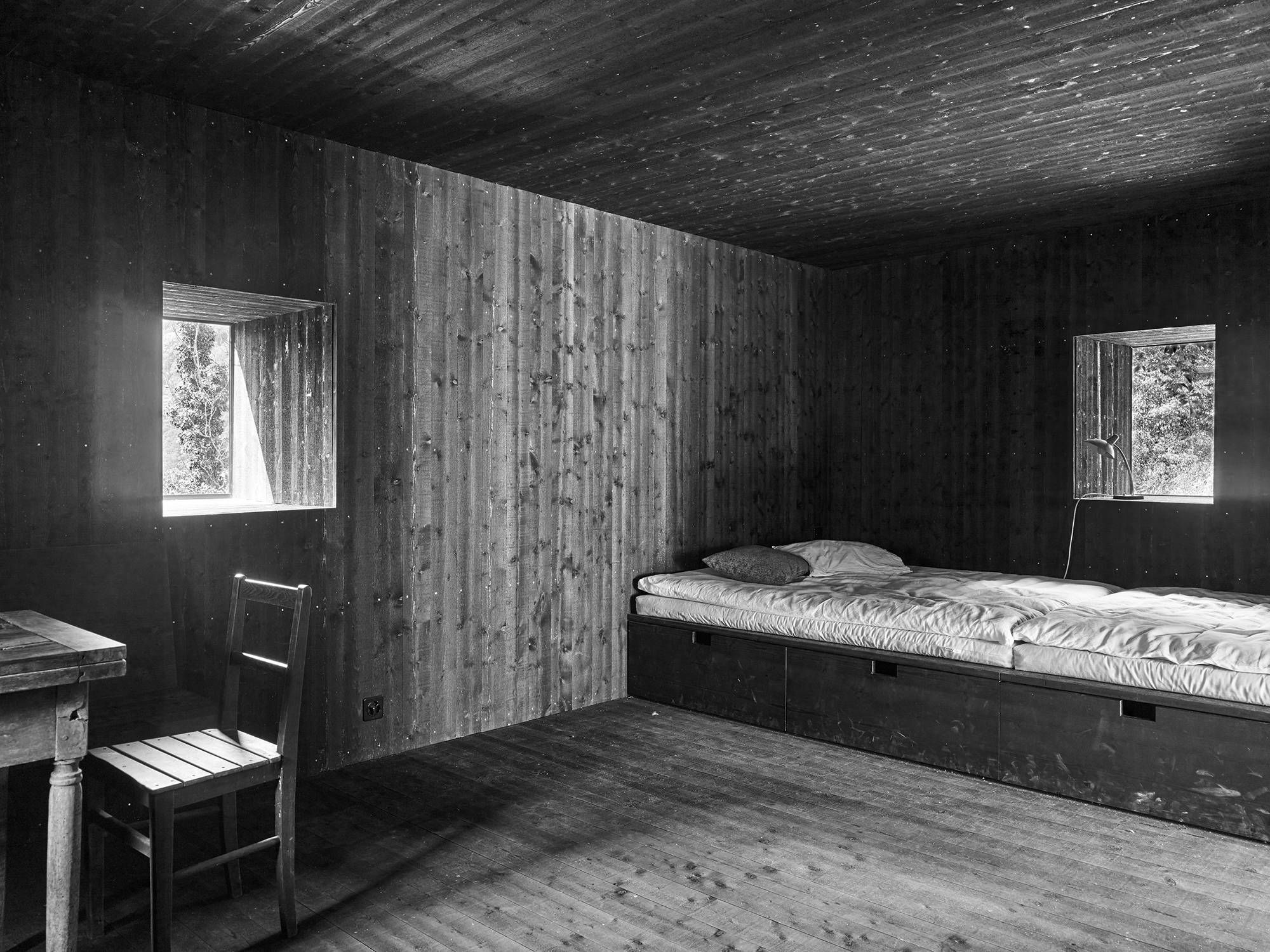Source: Buchner Bründler, Afasia
Photography: Georg Aerni
Located on a steep slope in the deep Onsernone valley in Ticino, is an ensemble of stone houses, which has been extended over generations and unoccupied for many years. The ensemble is perched on a mountain ridge, screened from the village of Mosogno di Sotto situated higher up, while opening up to the green valley with a terrace. The client, familiar with the way of life typical in Ticino, asked for a residential house to be developed from the ensemble using simple means.
The condition, primarily of the main house of the ensemble, was poor, with all timber elements such as beam constructions or intermediate floors in a state of dilapidation. The main building was therefore turned into a summer house, while the annex – better preserved than the main building – was converted to a winter living space. The longer the stone houses were examined, the more evident it became that the history of the main building played a major role for the ensemble. Instead of disappearing behind a layer of white plastering, the traces of the building’s history are now clear to see. Due to the state of disrepair, the classical small-chamber structure of the main building was dismantled and replaced by a large summer hall extending across two storeys, with the walls bearing witness to the original usages of past inhabitants. Plastering and structures of living spaces are visible at the top and the naked stones of the wine cellar below, with a wall fragment bearing a chimney in the middle, enclosed by a metal frame supporting the wall fragment and bracing the walls of the house. Since it was not possible to retain the wooden roof construction, the summer hall is covered by a corrugated steel roof instead. This rests on a steel framework and provides protection from the weather. The air, sounds and atmospheric changes in the immediate surroundings are hence perceptible inside.
The awning projecting from the protective roof covering towards the valley calls to mind the old, decayed pergola. Adjacent to this, is a bathroom in a small structure next to the summer hall: it was also not possible to save the wood here, which is why the building is now enclosed by a concrete cupola. The newly extended terrace facing the valley rests on a dry stone wall. The wooden beam construction of the annex towards the west was found to be intact all the way up to the roof. A living space finished with an interior of dark-painted wood was inserted in the annex on cams. The climatically and energy-controlled volume serves as a space for cooking, eating, sleeping and sheltering from winter weather. Local craftsmen who still have access to the skills of traditional stone house building played an essential role in the project. Respectful handling of the historic substance was of great importance. The conversion was a balancing act between authenticity and the picturesque – an attempt to retain the atmosphere and identity of the place through specific interventions.
Place: Mosogno di Sotto, Ticino, Switzerland
Year: 2014-2018
State: Built
Program: Residencial
Esta entrada aparece primero en HIC Arquitectura http://hicarquitectura.com/2019/12/buchner-brundler-summer-house-in-mosogno/















No hay comentarios:
Publicar un comentario